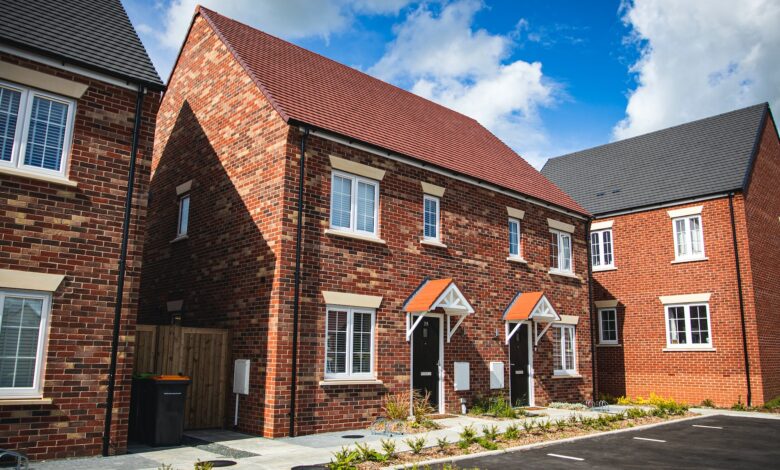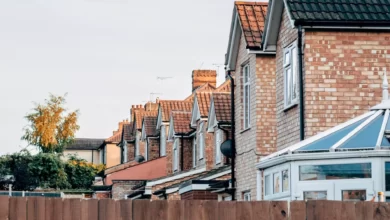
Top 7 British Home Design Styles You’ll Fall In Love With
The architecture of the United Kingdom embodies a combination of architectural styles and has evolved significantly during the past centuries to get to today’s form. Britain’s most representative buildings are those of the famous and symbolic colleges and universities. For example, Oxford University’s stunning design is a British architecture trademark, widely known and easy to recognise.
To understand the differences between these home styles, you need to be familiar with British architecture and history. Therefore, this article will walk you through the eras when these designs were born, how they were perceived back then, their particularities and their most appealing features.
Keep reading to build historical background knowledge and determine what features and characteristics of these seven house design styles best suit your home.
Tudor
The 15th and 17th centuries saw the end of Mediaeval architecture in Britain, and the foundation of the Church of England isolated Britain, leading to less influence by styles across continental Europe. The use of brick gained ground towards the end of the Mediaeval period.
Typical features of a Tudor building may include half-timbering, gable roofs, grouped windows and masonry chimneys. One of the most notable interior features is oak panelling, and you can consider the low Arch and Oriel Windows as classic “Tudor” characteristics. Most homes with this design feature practicality and don’t focus on symmetry.
Georgian
Roman architecture mainly influenced this period and lasted approximately from 1780 to 1820. These times saw elegant homes, symmetrical facades and ornate decorations. Panel doors, high ceilings and classical exteriors were everywhere and many structures had the tops divided into small sections and walls painted in a single colour.
The Georgian house style remains admired worldwide, as most homeowners still adore trendy high ceilings.
Georgian houses feature rigid symmetry in door and window placement and building. They are predominantly made from brick, but you can use stone or stucco too. These houses have decorative window headers, hip roofs and entrance embellishments such as ogee caps, arched tops and pediments. A Georgian-style kitchen has painted woodwork and walls and cabinets decorated in a single colour.
Art deco
The fashionable Art Deco buildings were coined after an exhibition of modern and industrial decorative arts held in 1925 in Paris. Therefore, this British leading architect’s design was influenced by many sources. People rejected historicism and started experimenting with new architectural styles and embracing other structural possibilities. Steel and concrete began to be used in building constructions. Public buildings and universities adopted this style, too. Art Deco design’s features lasted predominantly from 1925 to 1939.
Elizabethan
The Prodigy houses defined the Elizabethan home design style, being showy and flashy. During Elizabeth’s reign, no new palaces were built, but many houses of the wealthy appeared. These were aesthetic, and people in the lower classes tried to make their houses bigger and comfier. Elizabethan homes feature “more glass than wall” to allow natural light to flood your rooms and to replace wooden shutters.
Some characteristics of this home style are pillared porches, leaded windows, dormer windows, high chimneys, thatched roofs, vertical and diagonal timbers and overhanging first floors. To bring some Elizabethan air into your living room, you can have a bulbous table with carved ornaments such as nulling and acanthus leaves.
Edwardian
These houses’ interiors became brighter and lighter in this era thanks to the arrival of electric lighting, thus resulting in cleaner houses. Many public buildings adopted the Baroque style of the late 17th century. During this time, the Arts and Crafts movement took hold, resulting in homes with hanging tiles, timber framing, pebbledash and white painted timber porches and balconies.
These homes are not as showy as in Victorian architecture, and they are colourful and decorative with patterns and carvings and simple internal decorative features. They are generally built in a straight line, constructed with red brickwork and have wide hallways and rooms, parquet wood floors and porches with wooden frames. Your Edwardian rooms should feature floral and embossed paintings and wallpapers for a cheerful, bright and elegant approach.
Victorian
Queen Victoria’s era reign came with many changes, saw different architectural styles and became a favourite for most people during those times. Some Tudor architectural styles came back during that period, bricks became popular again, and the wealthy would display their affluence with vibrant decorations and colourful brickwork. British architecture often refers to Victorian architecture, probably because the period had many styles widely used. Wealthy people would bring some influences on the styles and designs as they travelled.
The defining features of a Victorian house are bright colours, decorative woodwork, shapely windows, stained glass, round angles, towers and dormers and steep, gabled roofs. A Victorian bathroom is often wood panelled with hand-painted tiles, and a kitchen of this style features freestanding cabinetry.
Queen Anne
Queen Anne house-style houses saw their popularity peak from the 1880s through the 1910s. It is a Victorian-style house with specific features such as decorative trim and an asymmetrical exterior. This design shines in detached, single-family dwellings that showcase ornamentation and sculptural shapes. Queen Anne houses allow the unfettered artistic expression in the details and patterns that define this design and are typically constructed of wood.
You’ll preferably incorporate asymmetrical and dynamic facades, a steep roof, an expansive porch, complex colour schemes and exterior ornament if you go for this stunning British house style.
Conclusion
There is an overwhelming abundance in the British architectural styles that it can be tricky to distinguish the actual design of your property.
All these house designs have their own charm and uniqueness, especially since you’ve dived into their stories. Now that you’ve grasped what characteristics British houses’ design styles have, you can certainly imagine what decorations and improvements you can make to turn your home into a dream place.






